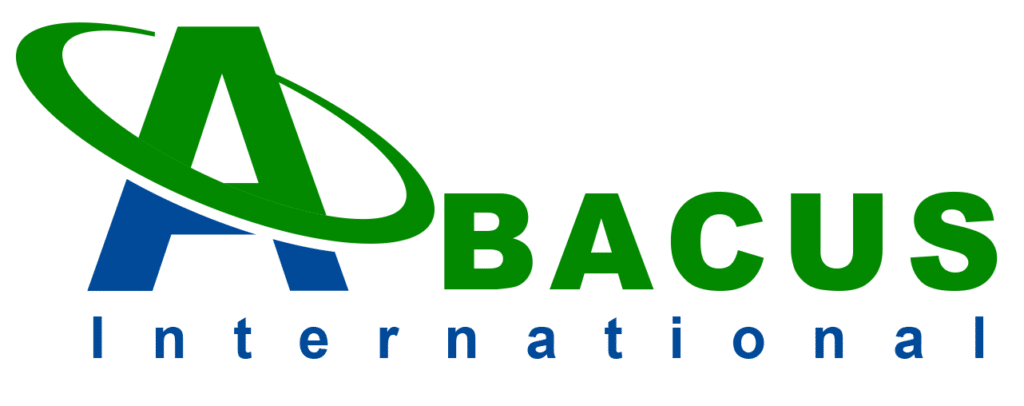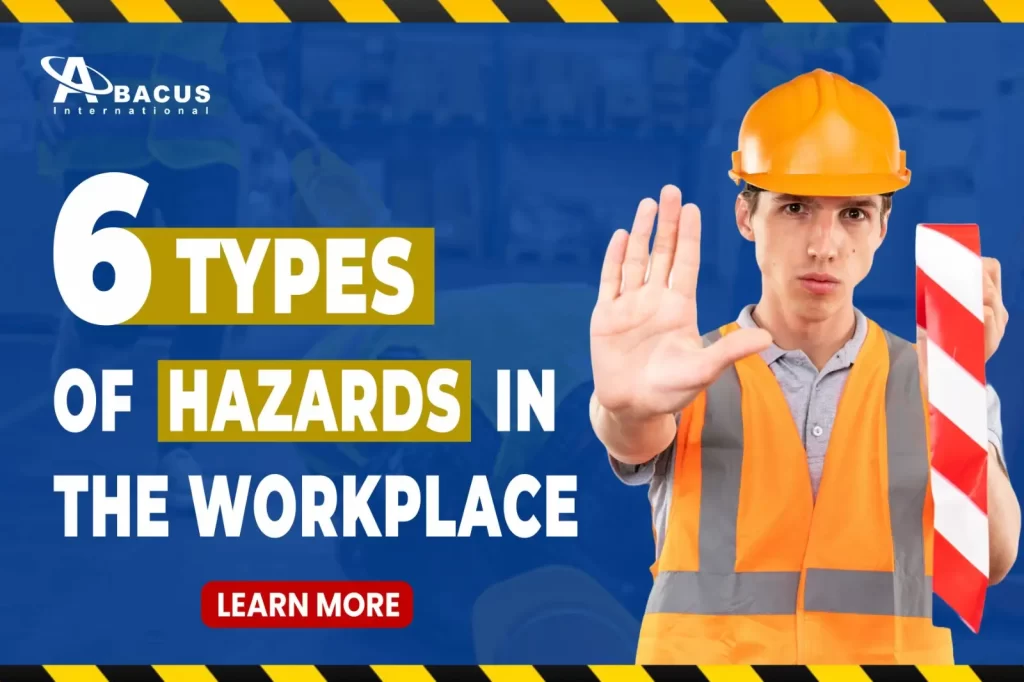In any work environment, it’s essential to recognize and address potential hazards to ensure the safety and well-being of employees. A hazard is any source of potential damage, harm, or adverse health effects on something or someone.
What Is a Workplace Hazard?
In any work environment, a hazard refers to any potential source of harm or adverse health effects on an individual or group. Workplace hazards enclose a wide range of risks that can arise from various sources, including the nature of the work itself, the equipment used, the work environment, and even psychological factors.
Understanding these hazards is crucial for implementing effective safety measures and preventing accidents or injuries. Let’s discuss about the different types of hazards commonly found in the workplace and how they can be managed to create a safe and healthy work environment.
Types of Hazards
Here are the six main types of workplace hazards:
- Biological
- Chemical
- Ergonomic
- Physical
- Psychological
- Safety
Biological Hazards involve exposure to biological substances that can cause harm to human health. These hazards often include viruses, bacteria, fungi, parasites, and other microorganisms. In workplaces such as healthcare facilities, laboratories, or agricultural settings, employees may encounter biological hazards through exposure to bloodborne pathogens, infectious diseases, or allergens from plants or animals.
Chemical Hazards arise from exposure to harmful substances in the workplace, including liquids, gases, vapors, and dusts. These substances can cause acute or chronic health effects through inhalation, ingestion, or skin contact. Examples include toxic chemicals, corrosive materials, and carcinogens.
Ergonomic Hazards result from poorly designed workstations, equipment, or tasks that strain the body’s musculoskeletal system. Poor ergonomic practices can result in repetitive strain injuries, back pain, carpal tunnel syndrome, and other health issues. Factors contributing to ergonomic hazards include awkward postures, repetitive tasks, excessive force, and insufficient rest breaks.
Physical Hazards are environmental factors or conditions that can cause harm through direct contact or exposure. These hazards encompass a wide range of risks, including noise, vibration, temperature extremes, radiation, and electrical hazards. Improperly maintained machinery, slippery floors, falling objects, and inadequate lighting are examples of physical hazards that can pose dangers to workers.
Psychological Hazards affect employees’ mental well-being and can result from factors such as workplace stress, harassment, bullying, violence, and traumatic events. These hazards can lead to anxiety, depression, and other mental health issues if not properly managed.
Safety Hazards refer to conditions or practices that increase the risk of accidents or injuries in the workplace. Examples include slippery floors, inadequate lighting, electrical hazards, lack of machine guarding, and poor housekeeping. Failure to implement proper safety procedures, inadequate training, and lack of personal protective equipment (PPE) can exacerbate safety hazards in the workplace.
Tips for Managing Workplace Hazards
Managing workplace hazards requires a proactive approach to identify, assess, and control risks effectively. Here are some tips for managing workplace hazards:
- Conduct Regular Hazard Assessments: Regularly assess the workplace to identify potential hazards and evaluate associated risks. Consider factors such as the nature of work, equipment used, and environmental conditions.
Also Read: Steps for Risk Assessment at Work - Implement Control Measures: Once hazards are identified, implement appropriate control measures to eliminate or minimize risks. This may involve engineering controls, administrative controls, or personal protective equipment (PPE).
- Provide Training and Education: Ensure that employees receive enough training and education on workplace hazards, including how to recognize, report, and reduce risks. Empowering employees with knowledge and skills can help prevent accidents and injuries.
- Encourage Open Communication: Promote a culture of open communication where employees feel comfortable reporting hazards, near misses, and safety concerns. Encourage feedback and involve employees in safety initiatives and decision-making processes.
- Regular Maintenance and Inspection: Maintain equipment, machinery, and facilities regularly to prevent malfunctions and breakdowns that could pose safety hazards. Conduct routine inspections to identify and address potential issues promptly.
Proactive Measures for Workplace Hazards
In addition to managing hazards, it’s essential for workplaces to be prepared to respond effectively to emergencies and unforeseen events. Here are some steps to prepare for workplace hazards:
- Develop Emergency Response Plans: Develop comprehensive emergency response plans that outline procedures for various scenarios, such as fires, chemical spills, medical emergencies, and natural disasters. Ensure all employees are familiar with these plans and conduct regular drills.
Also Read: Best Practices for Effective Fire Prevention - Provide First Aid and Medical Assistance: Ensure that adequate first aid supplies are readily available, and designated personnel are trained in first aid and CPR. Establish protocols for accessing medical assistance in the event of injuries or illnesses. Games
Also Read: Basic First Aid Skills Everyone Should Learn - Establish Communication Protocols: Establish communication protocols to disseminate critical information during emergencies, such as evacuation procedures, assembly points, and emergency contacts. Utilize multiple communication channels to reach all employees effectively.
- Review and Update Policies Regularly: Review and update workplace policies, procedures, and safety protocols regularly to reflect changes in technology, regulations, and best practices. Stay informed about emerging hazards and industry trends to adapt your approach accordingly.
- Take Safety Training Courses: Take relevant training courses to enhance hazard awareness and response skills. We offer many international health and safety courses that can help you to boost to your career while keeping your workers safe as possible. You can check our online courses and find the one that suits you. Contact us today for more information.
By understanding the various types of hazards present in the workplace and implementing proactive measures to manage and prepare for them, employers can create a safer and healthier work environment for their employees.


